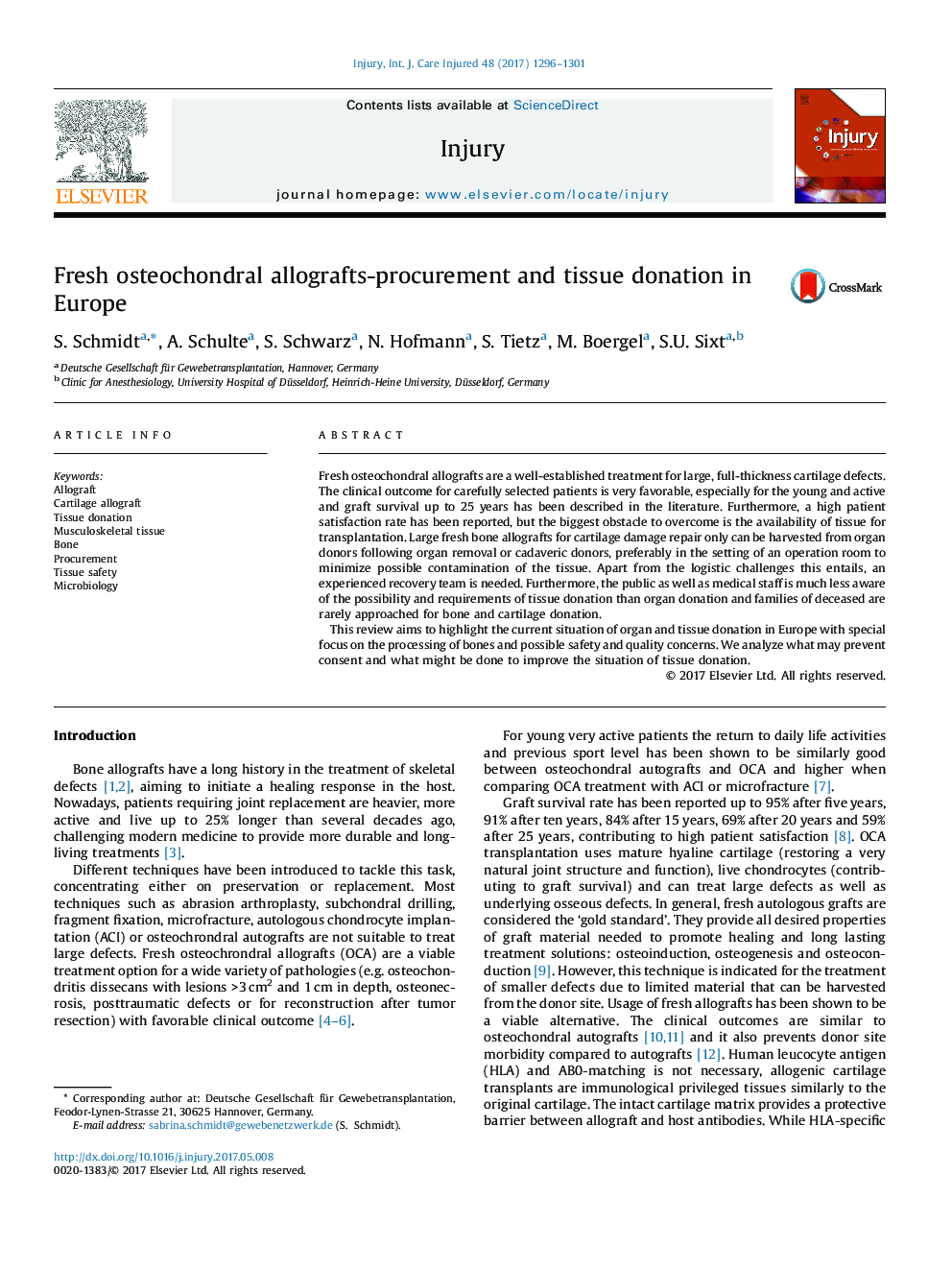| Article ID | Journal | Published Year | Pages | File Type |
|---|---|---|---|---|
| 5653071 | Injury | 2017 | 6 Pages |
Fresh osteochondral allografts are a well-established treatment for large, full-thickness cartilage defects. The clinical outcome for carefully selected patients is very favorable, especially for the young and active and graft survival up to 25 years has been described in the literature. Furthermore, a high patient satisfaction rate has been reported, but the biggest obstacle to overcome is the availability of tissue for transplantation. Large fresh bone allografts for cartilage damage repair only can be harvested from organ donors following organ removal or cadaveric donors, preferably in the setting of an operation room to minimize possible contamination of the tissue. Apart from the logistic challenges this entails, an experienced recovery team is needed. Furthermore, the public as well as medical staff is much less aware of the possibility and requirements of tissue donation than organ donation and families of deceased are rarely approached for bone and cartilage donation.This review aims to highlight the current situation of organ and tissue donation in Europe with special focus on the processing of bones and possible safety and quality concerns. We analyze what may prevent consent and what might be done to improve the situation of tissue donation.
